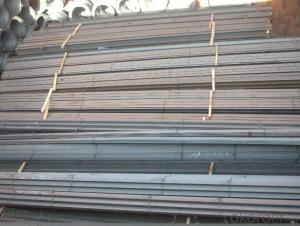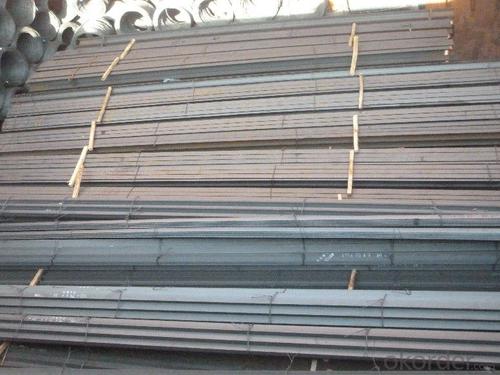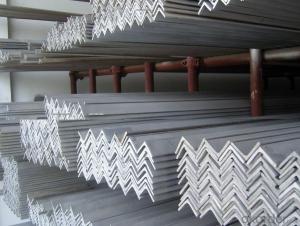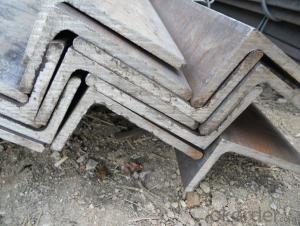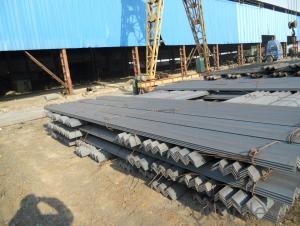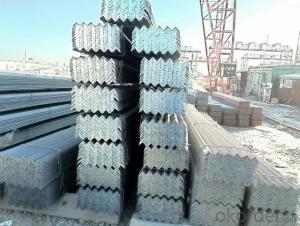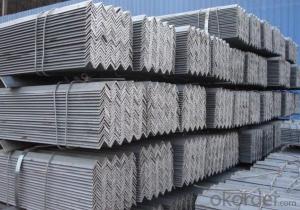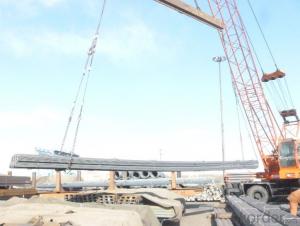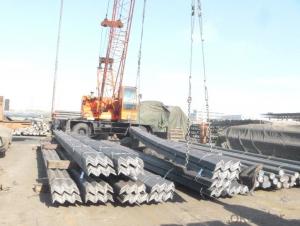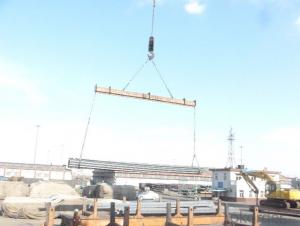angle steel
- Loading Port:
- China Main Port
- Payment Terms:
- TT OR LC
- Min Order Qty:
- -
- Supply Capability:
- -
OKorder Service Pledge
OKorder Financial Service
You Might Also Like
Product Description:
Specifications of Angle Steel
1. Invoicing on theoretical weight or actual weight as customer request
2. Length: 6m, 9m, 12m as following table
3. Sizes

Sizes: 25mm-250mm | ||
a*t | ||
25*2.5-4.0 | 70*6.0-9.0 | 130*9.0-15 |
30*2.5-6.6 | 75*6.0-9.0 | 140*10-14 |
36*3.0-5.0 | 80*5.0-10 | 150*10-20 |
38*2.3-6.0 | 90*7.0-10 | 160*10-16 |
40*3.0-5.0 | 100*6.0-12 | 175*12-15 |
45*4.0-6.0 | 110*8.0-10 | 180*12-18 |
50*4.0-6.0 | 120*6.0-15 | 200*14-25 |
60*4.0-8.0 | 125*8.0-14 | 250*25 |
5. Payment terms:
1).100% irrevocable L/C at sight.
2).30% T/T prepaid and the balance against the copy of B/L.
3).30% T/T prepaid and the balance against L/C
6.Material details:
Alloy No | Grade | Element (%) | | ||||
C | Mn | S | P | Si | | ||
| | |||||||
|
|
|
|
|
|
| |
Q235 | B | 0.12—0.20 | 0.3—0.7 | ≤0.045 | ≤0.045 | ≤0.3 | |
|
|
|
|
|
|
| |
Alloy No | Grade | Yielding strength point( Mpa) | | ||||
Thickness (mm) | | ||||||
≤16 | >16--40 | >40--60 | >60--100 | | |||
≥ | | ||||||
|
|
|
|
|
| | |
Q235 | B | 235 | 225 | 215 | 205 | | |
Alloy No | Grade | Tensile strength (Mpa) | Elongation after fracture (%) | | |||
Thickness (mm) | | ||||||
| ≤16 | >16--40 | >40--60 | >60--100 | | ||
≥ | | ||||||
|
|
|
|
|
|
| |
Q235 | B | 375--500 | 26 | 25 | 24 | 23 | |
Usage & Applications of Angle Steel
According to the needs of different structures, Angle can compose to different force support component, and also can be the connections between components. It is widely used in various building structures and engineering structures such as roof beams, bridges, transmission towers, hoisting machinery and transport machinery, ships, industrial furnaces, reaction tower, container frame and warehouse etc.
Packaging & Delivery of Angle Steel
1. Packing: it is nude packed in bundles by steel wire rod
2. Bundle weight: not more than 3.5MT for bulk vessel; less than 3 MT for container load
3. Marks:
Color marking: There will be color marking on both end of the bundle for the cargo delivered by bulk vessel. That makes it easily to distinguish at the destination port.
Tag mark: there will be tag mark tied up on the bundles. The information usually including supplier logo and name, product name, made in China, shipping marks and other information request by the customer.
If loading by container the marking is not needed, but we will prepare it as customer request.
Production flow of Angle Steel
Material prepare (billet) —heat up—rough rolling—precision rolling—cooling—packing—storage and transportation

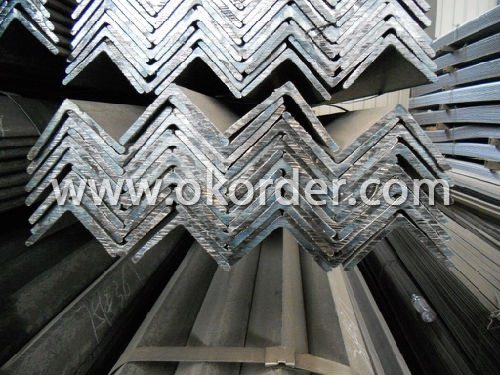

- Q: How do steel angles compare to aluminum angles?
- Different applications require different materials, with steel angles and aluminum angles having distinct properties and characteristics. Steel angles, also referred to as steel L-shaped beams, are known for their robustness and resilience. They find extensive use in construction projects like building frames, bridges, and industrial structures where their ability to bear heavy loads is essential. Comparatively, steel angles possess a higher tensile strength than their aluminum counterparts, allowing them to withstand greater forces without deformation or breakage. On the contrary, aluminum angles are lightweight and possess exceptional corrosion resistance. This makes them ideal for applications where weight is a crucial factor, such as the aerospace and marine industries. Additionally, aluminum angles are commonly employed in architectural projects due to their malleability and ability to be shaped into various designs. Furthermore, aluminum angles exhibit commendable thermal and electrical conductivity properties, making them well-suited for heat transfer applications. When it comes to cost, steel angles are generally more budget-friendly due to lower steel production costs. However, aluminum angles often demand less maintenance and boast a longer lifespan, thanks to their resistance against corrosion. Ultimately, the selection between steel angles and aluminum angles is contingent upon the specific requirements of the project. If the priority is high strength and durability, steel angles are the preferred option. Conversely, if weight, corrosion resistance, and design flexibility hold greater importance, aluminum angles are the superior choice.
- Q: Are there any special considerations when handling or installing steel angles?
- Yes, there are several special considerations that should be taken into account when handling or installing steel angles. Firstly, it is important to ensure that the angles are stored and transported properly to prevent any damage. Steel angles should be stored in a dry and well-ventilated area to prevent rusting. When transporting, they should be secured properly to prevent any accidents or injuries. Secondly, steel angles should be installed on a solid and level surface to ensure stability and proper load distribution. It is recommended to use a level and plumb line to ensure accurate installation. Thirdly, it is crucial to use the appropriate size and type of fasteners when installing steel angles. The fasteners should be compatible with the angle and the material it is being attached to. It is also important to ensure that the fasteners are tightened properly to avoid any loosening or failure. Additionally, it is important to consider the load-bearing capacity of the steel angles. The angles should be selected based on the expected load and application requirements. It is advisable to consult with a structural engineer or a professional to determine the appropriate size and type of steel angles for the specific project. Lastly, safety precautions should be followed when handling and installing steel angles. Protective gear, such as gloves and safety glasses, should be worn to prevent any injuries. It is also important to follow safe lifting practices and use proper lifting equipment when handling heavy steel angles. Overall, it is important to take these special considerations into account when handling or installing steel angles to ensure proper installation, structural integrity, and safety.
- Q: Can steel angles be used for sound barriers?
- Yes, steel angles can be used for sound barriers. Steel angles are commonly used in construction and can be suitable for sound barrier applications due to their durability, strength, and ability to absorb and block sound.
- Q: How do steel angles perform in high-wind regions?
- Steel angles perform well in high-wind regions due to their inherent strength and durability. The angled shape helps distribute wind forces evenly, minimizing the risk of structural failure. Additionally, steel angles can be reinforced with additional supports or bracing to further enhance their performance in high-wind areas.
- Q: What's the size of the 50 angle iron?
- Specification for 50 equal anglesTwo sides at right angles, 90 degrees. The length of the side is 50mm, and the thickness of the edge is 3mm, 4mm, 5mm and 6mm. The corresponding weight of each meter is 2.332 kg, 3.059 kg, 3.770 kg, 4.465 kg, respectively, four kg.
- Q: Can steel angles be used as framing members in buildings?
- Yes, steel angles can be used as framing members in buildings. Steel angles are commonly used in structural applications due to their strength, durability, and versatility. They provide excellent support and stability, making them suitable for framing various building elements such as walls, floors, and roofs.
- Q: Are steel angles available in different grades of steel?
- Different grades of steel are available for steel angles, which are widely used in the construction and manufacturing industries for various purposes including structural support, framing, and bracing. The grade of steel used in steel angles is determined based on its chemical composition, mechanical properties, and intended use. A36, A572, and A588 are some common grades of steel used for steel angles, each with specific characteristics suited for different applications. For instance, A36 steel angles are commonly utilized for general structural purposes, whereas A572 steel angles possess higher strength and are often utilized in heavy-duty construction projects. The selection of the grade depends on factors like load-bearing capacity, corrosion resistance, and cost considerations.
- Q: What are the different load-carrying capacities for steel angles?
- The load-carrying capacities for steel angles vary depending on factors such as the size, shape, and material of the angle, as well as the specific application and installation method. It is recommended to consult engineering resources, industry standards, or a structural engineer for accurate load-carrying capacity information.
- Q: What are the common defects or issues found in steel angles?
- There are several common defects or issues that can be found in steel angles, which can affect their structural integrity and performance. Here are some of the most frequently encountered: 1. Surface imperfections: Steel angles may have surface defects such as scratches, pits, or uneven coating. While these may not significantly affect the strength of the angle, they can impact its visual appearance and corrosion resistance. 2. Warping: Warping refers to the distortion or bending of the steel angle along its length. This defect can occur during the manufacturing process or due to improper handling or storage. Warped angles may not fit properly in applications where precise dimensions are required. 3. Flaws in dimensions: Steel angles should be manufactured to specific dimensions and tolerances. However, defects like undersized or oversized legs, unequal leg lengths, or inconsistent thickness can occur. These flaws can lead to problems during installation or compromise the structural integrity of the angle. 4. Lack of straightness: Steel angles should be straight along their length to ensure proper alignment and load distribution. However, they can sometimes exhibit a lack of straightness, commonly known as bowing or crooking. This defect can make it challenging to align angles accurately and may result in uneven stress distribution. 5. Internal cracks: Cracks within the steel angle are a significant concern as they can compromise its strength and load-bearing capacity. These cracks can occur during manufacturing due to improper cooling or quenching processes, or they can be a result of excessive stress or corrosion. Internal cracks are often not visible to the naked eye, making it crucial to perform non-destructive testing methods like ultrasound or magnetic particle inspection. 6. Corrosion: Steel angles are susceptible to corrosion, especially in environments with high humidity, moisture, or exposure to chemicals. Corrosion can weaken the structure and affect the angle's overall performance. Regular maintenance and proper coating or protective measures are necessary to prevent or minimize corrosion-related defects. It is essential to identify and address these defects or issues promptly to ensure the safety and reliability of steel angles in various applications, from construction and infrastructure to manufacturing and fabrication. Regular quality checks, adherence to industry standards, and appropriate maintenance practices can help mitigate these problems and ensure the longevity of steel angles.
- Q: Can steel angles be used for manufacturing ladders?
- Yes, steel angles can be used for manufacturing ladders. Steel angles are commonly used in ladder construction due to their strength and durability. They provide a sturdy framework and can withstand heavy loads, making them suitable for ladder applications. Steel angles also offer resistance to bending and twisting, ensuring stability and safety when climbing. Additionally, they can be easily welded or bolted together to create the desired ladder structure. Overall, steel angles are a reliable choice for manufacturing ladders.
Send your message to us
angle steel
- Loading Port:
- China Main Port
- Payment Terms:
- TT OR LC
- Min Order Qty:
- -
- Supply Capability:
- -
OKorder Service Pledge
OKorder Financial Service
Similar products
Hot products
Hot Searches
Related keywords
